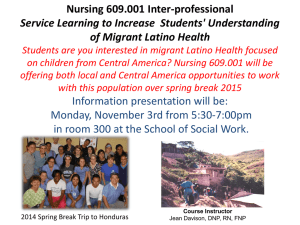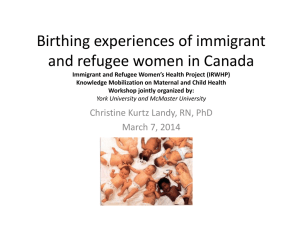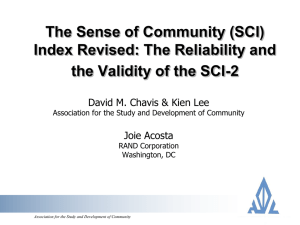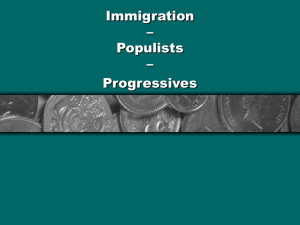Immigrant Political Participation
advertisement
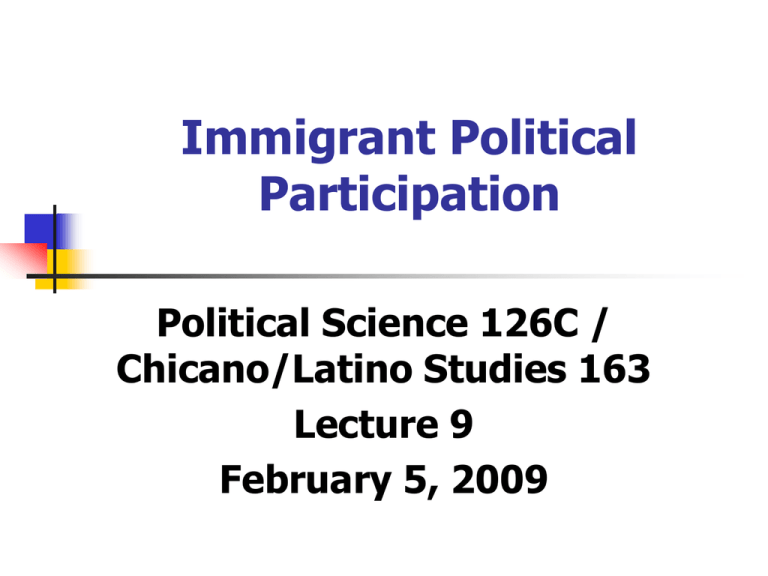
Immigrant Political Participation Political Science 126C / Chicano/Latino Studies 163 Lecture 9 February 5, 2009 Revisiting Models of Immigrant Incorporation 1. 2. 3. From Sociology: [Traditional] Assimilation “New assimilation” with particular attention to status at entry Segmented assimilation [Traditional] Assimilation Immigrants 2nd generation 3rd+ generation “New Assimilation” (particular attention to status at entry) 120 100 80 60 Labor migrant 40 Skilled migrant 20 0 -20 -40 -60 Immigrants 2nd generation 3rd+ generation Unauthorized migrant Segmented Assimilation 120 100 Labor migrant neutral reception 80 Labor migrant negative reception 60 40 Skilled migrant neutral reception 20 0 -20 -40 -60 -80 -100 Immigrants 2nd generation 3rd+ generation Skilled migrant positive reception Unauthorized migrant - neutral reception Unauthorized migrant - negative reception These Are General Models Not predictive at individual level They look for patterns across national origin groups, regions, religious groups, and skill sets Likely that different patterns will appear on different measures of assimilation What’s Unique About Political Assimilation? Key “formal” measure – what the state cares about – naturalization occurs or doesn’t in the first generation 14th Amendment guarantees that all people born in the United States are U.S. citizens Citizenship also extended to children of U.S. citizens born abroad Is there a consequence for the second generation of immigrant parents who don’t naturalize? Very small third generation – grandchildren of immigrants – in today’s polity So political incorporation models primarily speak to change between immigrant parents and 2nd generation A Model for Immigrant Political Incorporation We’ll talk about aspects of this for the next two classes Today: The [positive] role of challenges to immigrant status Immigrants Human Capital Group Dynamics Formal Incorporation Participation Institutional Resources Challenges to Immigrant Status 1.5, 2nd, 3rd Generation Parental Incorporation Human Capital & Group Resources Political Values, Attitudes, & Behaviors 2006 Immigrant Rights Protests (and Response) Short-Term Goal Met Criminalization provisions of HR 4437 quickly left the debate … at some cost 700 miles of wall authorized Expansion of Border Patrol and interior enforcement (raids) Arguably, this victory and the generally positive nature of the protests should have been an empowering experience for immigrant families How to Assess LongerTerm Implications? Public opinion on immigration issues Change in immigrant naturalization behaviors Congressional/presidential politics 1. 2. 3. 4. 2006 2008 and beyond New immigrant organizational infrastructure 1. Mass Public Opinion General pattern – unfocused, internally contradictory, and highly responsive to the way the question is asked 1. 2. Immigration at current levels too high, but immigrants are an asset Opposition to unauthorized migration, support for increasing barriers to unauthorized migration, but support for a path to legal residence Patterns unchanged by 2006 protests Overall, protestors viewed unfavorably by twice as many as view them favorably Group that Did See Some Change – Latino U.S. Citizens Historically, Latino U.S. citizens have had arms-length relationship with Latino immigrants Immigrant protests reminded Latino U.S. citizens of their immigrant roots More than half supported legalization Immigration/immigrant rights not top important issue for Latino voters 2. Naturalization Applications increased dramatically in March 2006 and have stayed high Feb. 2006 – 57,000 March 2006 – 78,000 Average March 2006-February 2007 – 65,000/month Protests, not the only cause Revised naturalization exam Proposed fee increase 3. Electoral Consequences 2006 – Protests came to late to shape primaries (most likely point of influence) Lesson to officeholders – California 48 (preceded protests) Campbell (R) Gilchrist (I) Immigration an issue in a few Congressional races – No consistent outcome to shape Congressional debate California 50 (Brian Bilbray) Arizona 8 (Randy Graf) Continuing Influences Potentially immigration-moderate Republicans made more strident Some surprise Democratic victories in border states/South – ran on anti-legalization platforms, dividing Democratic caucus Emergence of single-issue immigration candidates Reduces likelihood of compromise in the House


